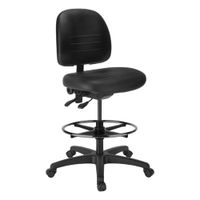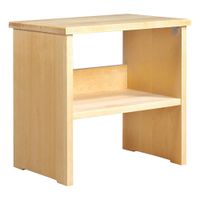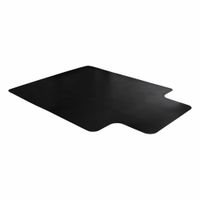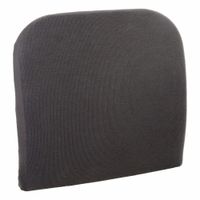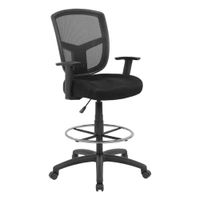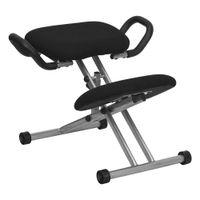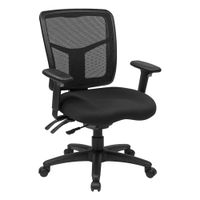Call +(254) 703 030 000 / 751 483 999 / 721 704 777
- Home
- Furnishings Appliances Hospitality
- Furniture
- Office Task Drafting Chairs Accessories
Frequently Asked Questions
What is the best office chair for long hours of sitting?
The best office chair for long hours of sitting is the Herman Miller Aeron Chair. This chair is renowned for its ergonomic design, which provides exceptional support and comfort, making it ideal for extended periods of sitting. The Aeron Chair features a unique mesh material called Pellicle, which allows for breathability and helps maintain a comfortable temperature. Its PostureFit SL technology supports the natural curve of the spine, promoting healthy posture and reducing back pain.
The chair offers a high degree of adjustability, including adjustable armrests, seat height, and tilt tension, allowing users to customize the chair to their specific needs. The Aeron Chair is available in three different sizes, ensuring a perfect fit for a wide range of body types. Its durable construction and high-quality materials ensure longevity, making it a worthwhile investment for those who spend significant time at their desks.
Additionally, the Aeron Chair has received numerous accolades and is often recommended by ergonomics experts and occupational health professionals. Its design not only focuses on comfort but also on promoting movement and reducing the risk of musculoskeletal disorders associated with prolonged sitting.
While the Herman Miller Aeron Chair is on the higher end of the price spectrum, its combination of ergonomic features, adjustability, and durability make it a top choice for those seeking the best office chair for long hours of sitting.
How do I choose an ergonomic office chair?
To choose an ergonomic office chair, consider the following factors:
1. **Adjustability**: Look for chairs with adjustable seat height, backrest, armrests, and lumbar support. This ensures the chair can be customized to fit your body and work style.
2. **Lumbar Support**: Ensure the chair provides adequate lower back support. A good ergonomic chair should have adjustable lumbar support to maintain the natural curve of your spine.
3. **Seat Depth and Width**: The seat should be deep and wide enough to support you comfortably. There should be a gap of 2-4 inches between the back of your knees and the seat edge.
4. **Seat Material**: Choose a chair with breathable fabric and sufficient padding to provide comfort over long periods.
5. **Backrest**: The backrest should be adjustable in both height and angle. It should support the natural curve of your spine, especially the lower back.
6. **Armrests**: Armrests should be adjustable and allow your arms to rest comfortably with shoulders relaxed. They should not interfere with your movement.
7. **Swivel and Casters**: A chair that swivels and has casters allows for easy movement and access to different parts of your desk without straining.
8. **Stability**: Ensure the chair has a stable base with at least five spokes to prevent tipping.
9. **Weight Capacity**: Check the chair’s weight capacity to ensure it can support your weight comfortably.
10. **Trial and Comfort**: If possible, test the chair before purchasing. Comfort is subjective, and personal testing can help determine if the chair meets your needs.
By considering these factors, you can select an ergonomic office chair that enhances comfort and productivity.
What features should I look for in a comfortable office chair?
When selecting a comfortable office chair, consider the following features:
1. **Ergonomic Design**: Look for chairs that support natural body posture, reducing strain on the back, neck, and shoulders.
2. **Adjustable Seat Height**: Ensure the chair allows you to adjust the seat height so your feet rest flat on the floor, thighs horizontal, and arms even with the desk height.
3. **Lumbar Support**: Opt for chairs with adjustable lumbar support to maintain the natural curve of your spine and prevent lower back pain.
4. **Seat Depth and Width**: The seat should be wide and deep enough to support any user comfortably. Look for a seat with adjustable depth to accommodate different leg lengths.
5. **Backrest**: A backrest that supports the natural curve of the spine is crucial. It should be adjustable in height and angle.
6. **Material and Padding**: Choose breathable materials like mesh for ventilation. The padding should be comfortable but not too soft, providing firm support.
7. **Armrests**: Adjustable armrests that allow your arms to rest comfortably and shoulders to relax are important. They should be adjustable in height and width.
8. **Swivel and Casters**: A chair that swivels easily and has smooth-rolling casters allows for easy movement and access to different parts of your workspace.
9. **Tilt Mechanism**: A chair with a tilt mechanism allows you to recline and lock the chair at various angles, promoting movement and reducing fatigue.
10. **Build Quality and Durability**: Look for chairs made from high-quality materials that ensure longevity and stability.
11. **Aesthetic and Style**: While comfort is key, the chair should also fit the aesthetic of your office space.
12. **Warranty and Brand Reputation**: Consider chairs from reputable brands that offer warranties, ensuring support in case of defects or issues.
Are expensive office chairs worth the investment?
Expensive office chairs can be worth the investment due to several key factors that contribute to long-term benefits. Firstly, ergonomic design is a primary feature of high-end chairs, which can significantly enhance comfort and reduce the risk of musculoskeletal disorders. These chairs often offer adjustable components such as seat height, armrests, lumbar support, and tilt mechanisms, allowing users to customize their seating position for optimal posture and support.
Durability is another important consideration. High-quality materials and construction mean that expensive chairs are likely to last longer, reducing the need for frequent replacements. This longevity can lead to cost savings over time, as cheaper chairs may wear out quickly and require more frequent purchases.
Productivity and health are also impacted by the quality of office seating. Comfortable and supportive chairs can help maintain focus and reduce fatigue, leading to increased productivity. Additionally, by minimizing discomfort and the risk of injury, these chairs can contribute to fewer sick days and lower healthcare costs.
Aesthetic appeal and professional image are further advantages. High-end chairs often feature sleek designs and premium materials that can enhance the overall look of an office, reflecting positively on a business's image and potentially impressing clients and visitors.
However, the decision to invest in expensive office chairs should consider individual needs and budget constraints. While the initial cost is higher, the long-term benefits in terms of health, productivity, and durability can justify the investment for many users. Ultimately, the value of an expensive office chair depends on how much time is spent sitting, the specific ergonomic needs of the user, and the importance placed on comfort and aesthetics in the workplace.
How do I adjust my office chair for proper posture?
1. **Seat Height**: Adjust the chair height so your feet are flat on the floor, thighs parallel to the ground, and knees at a 90-degree angle. Use a footrest if necessary.
2. **Seat Depth**: Ensure there is a 2-3 inch gap between the edge of the seat and the back of your knees. Adjust the seat depth if possible.
3. **Backrest**: Adjust the backrest to support the natural curve of your spine. The lumbar support should fit snugly against your lower back.
4. **Recline**: Set the backrest angle to allow a slight recline, typically between 100-110 degrees, to reduce pressure on your spine.
5. **Armrests**: Adjust armrests so your shoulders are relaxed, and elbows are at a 90-degree angle. Your forearms should rest comfortably without lifting your shoulders.
6. **Headrest**: If available, adjust the headrest to support the middle of your head, keeping your neck aligned with your spine.
7. **Monitor Height**: Position your monitor at eye level, about an arm's length away, to avoid straining your neck.
8. **Keyboard and Mouse**: Place them close enough to keep your elbows at your sides and wrists straight.
9. **Foot Position**: Keep feet flat on the floor or on a footrest to maintain proper leg alignment.
10. **Regular Breaks**: Take breaks every 30-60 minutes to stand, stretch, and move around to prevent stiffness and improve circulation.
What is the difference between a task chair and an executive chair?
A task chair and an executive chair differ primarily in design, functionality, and intended use.
Task chairs are designed for general office work and are typically used at desks for tasks that require mobility and flexibility. They are usually smaller, more lightweight, and have a simple design. Task chairs often feature basic ergonomic adjustments such as seat height, backrest tilt, and sometimes armrest adjustments. They are built for short to moderate periods of sitting and are often more affordable, making them suitable for a wide range of office environments.
Executive chairs, on the other hand, are designed for higher-level office settings, often used by managers or executives. They are larger, more luxurious, and have a more sophisticated design, often featuring high backs, plush padding, and premium materials like leather. Executive chairs offer more advanced ergonomic features, including adjustable lumbar support, multi-function tilt mechanisms, and sometimes headrests. They are built for comfort during long hours of sitting and convey a sense of authority and status.
In summary, task chairs prioritize functionality and affordability for everyday office tasks, while executive chairs focus on comfort, aesthetics, and status for higher-level office roles.
How do I maintain and clean my office chair?
To maintain and clean your office chair, follow these steps:
1. **Regular Dusting**: Use a soft cloth or a vacuum with a brush attachment to remove dust and debris from the chair's surface, including the seat, backrest, and armrests.
2. **Spot Cleaning**: For fabric chairs, use a mild detergent mixed with water. Dab the solution onto stains with a clean cloth, then blot with a dry cloth. For leather chairs, use a leather cleaner or a mixture of water and mild soap. Wipe with a damp cloth and dry immediately.
3. **Deep Cleaning**: For fabric chairs, use an upholstery cleaner or a steam cleaner for a thorough clean. For mesh chairs, use a mixture of water and mild soap, scrubbing gently with a soft brush. For leather, apply a leather conditioner after cleaning to maintain suppleness.
4. **Cleaning Casters**: Flip the chair and remove debris from the wheels using a vacuum or compressed air. For stubborn dirt, remove the wheels if possible and wash them with soap and water.
5. **Tightening Screws and Bolts**: Regularly check and tighten any loose screws or bolts to ensure the chair remains stable and safe to use.
6. **Lubrication**: Apply a silicone-based lubricant to moving parts like the swivel and height adjustment mechanisms to ensure smooth operation.
7. **Avoid Direct Sunlight**: Keep the chair away from direct sunlight to prevent fading and material degradation.
8. **Regular Inspection**: Check for any signs of wear and tear, such as frayed fabric or cracked leather, and address these issues promptly to prevent further damage.
By following these steps, you can extend the life of your office chair and keep it looking and functioning like new.
